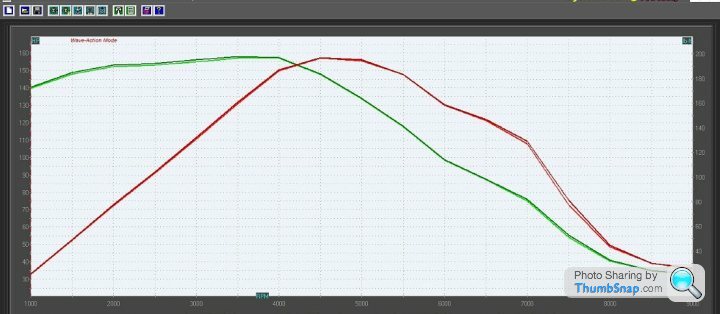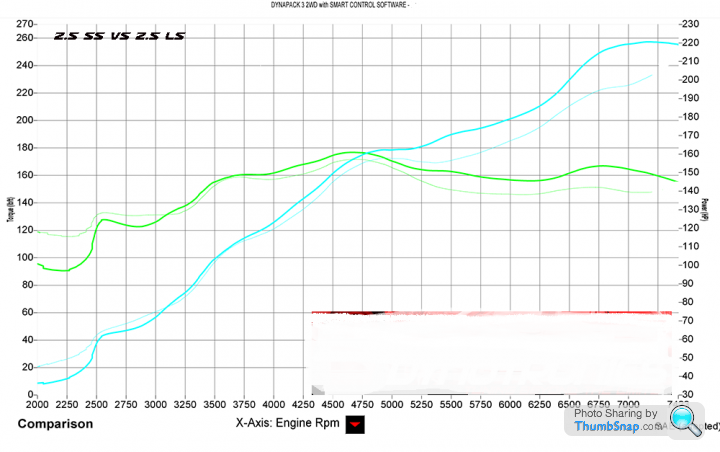Big bore, short stroke or narrow bore, long stroke?
Discussion
JoeBolt said:
I wasn't responding to your post Mignon but to the simple suggestion I quoted that an increase in surface area causes an increase in friction, (all other parameters being equal).
However, I dispute your suggestion that a longer stroke equates to an increase in friction. In the block diagram above, the force to keep the block moving will stay constant whether the block is being moved an inch or a mile, assuming the nature of the surfaces remains constant. If the force remains constant, then the friction being overcome must also remain constant.
What does increase with distance is work.
Work against friction = Force of friction x Distance
But in your block example.....not too many engines have that force applied at 90deg throughout....rod angle, thrust loads etc etc all play a partHowever, I dispute your suggestion that a longer stroke equates to an increase in friction. In the block diagram above, the force to keep the block moving will stay constant whether the block is being moved an inch or a mile, assuming the nature of the surfaces remains constant. If the force remains constant, then the friction being overcome must also remain constant.
What does increase with distance is work.
Work against friction = Force of friction x Distance
stevieturbo said:
JoeBolt said:
I wasn't responding to your post Mignon but to the simple suggestion I quoted that an increase in surface area causes an increase in friction, (all other parameters being equal).
However, I dispute your suggestion that a longer stroke equates to an increase in friction. In the block diagram above, the force to keep the block moving will stay constant whether the block is being moved an inch or a mile, assuming the nature of the surfaces remains constant. If the force remains constant, then the friction being overcome must also remain constant.
What does increase with distance is work.
Work against friction = Force of friction x Distance
But in your block example.....not too many engines have that force applied at 90deg throughout....rod angle, thrust loads etc etc all play a partHowever, I dispute your suggestion that a longer stroke equates to an increase in friction. In the block diagram above, the force to keep the block moving will stay constant whether the block is being moved an inch or a mile, assuming the nature of the surfaces remains constant. If the force remains constant, then the friction being overcome must also remain constant.
What does increase with distance is work.
Work against friction = Force of friction x Distance
its not about friction force its about the power consumed because of the friction force. power = force x velocity
the longer stroke has higher piston speed at a given rpm this is why it has more friction. the angularity between the rod and he bores does not help either
the friction correlates well to mean piston speed.
a bigger bore would have more friction if the rings had more tension, plus the gas pressure acts over a larger area which causes more friction but the effect is always less than the stroke for the simple reason that the bore area is proportional to D^2 and circumference is not. so when you keep engine size constant the stroke always changes by a higher % than the bore
the longer stroke has higher piston speed at a given rpm this is why it has more friction. the angularity between the rod and he bores does not help either
the friction correlates well to mean piston speed.
a bigger bore would have more friction if the rings had more tension, plus the gas pressure acts over a larger area which causes more friction but the effect is always less than the stroke for the simple reason that the bore area is proportional to D^2 and circumference is not. so when you keep engine size constant the stroke always changes by a higher % than the bore
Just to wrap this up I managed to get some time on a Dyno simulation program, below is a comparison between the two, the lighter trace is the long stroke:

I didn't expect any more bhp or torque for either, but was mildly surprised just how close they were throughout the rev range.
Below is what someone claimed they were doing on an actual hub dyno:



I didn't expect any more bhp or torque for either, but was mildly surprised just how close they were throughout the rev range.
Below is what someone claimed they were doing on an actual hub dyno:


The engine with the larger bore will always have the higher power potential.
The bore/stroke ratio has no real influence on torque output, but the shorter stroke can sustain higher engine speeds, therefore making more power.
This article covers some interesting maths on the subject.
https://www.blackartgraphics.com/pages/how-tuned-i...
The bore/stroke ratio has no real influence on torque output, but the shorter stroke can sustain higher engine speeds, therefore making more power.
This article covers some interesting maths on the subject.
https://www.blackartgraphics.com/pages/how-tuned-i...
simplifying things drastically:
the cylinder head and intake/exhaust governs the peak power potential.
the bore is important because it governs the ultimate potential of the cylinder head (i.e. generally a bigger bore will enable a better breathing cylinder head)
the engine capacity (i.e. the ensuing stroke) shapes the power curve before and after the peak as well as governing what rpm the peak will occur but does not really impact on the peak power potential.
the cylinder head and intake/exhaust governs the peak power potential.
the bore is important because it governs the ultimate potential of the cylinder head (i.e. generally a bigger bore will enable a better breathing cylinder head)
the engine capacity (i.e. the ensuing stroke) shapes the power curve before and after the peak as well as governing what rpm the peak will occur but does not really impact on the peak power potential.
Edited by Inline__engine on Sunday 23 September 00:53
Gassing Station | Engines & Drivetrain | Top of Page | What's New | My Stuff



